Nicolaus Copernicus (1473 – 1543), a Polish Church cannon, in 1514 was the first to write and circulate discreetly, the arguments that the Earth is round, the Sun stationary and that all the planets rotate round the Sun.
It was not until 1609, when the Italian scientist who developed the telescope and invented the thermometer, Galileo Galilei (1564 – 1642), could explain this explicitly using his telescope.
With his improved telescope, he could see the planet Jupiter better and identified the biggest four of the moons orbiting it.
He became convinced that everything does not, and must not, revolve around the Earth.
With further observations, he became convinced that the Sun, not the Earth, is the centre of the observable Universe.
On 17 February, 1600, a scientist, Giordano Bruno, for believing that the Earth moves round the Sun and that stars are distant suns with their own planets where possibly, other creatures lived, was sentenced by the Church and burnt to death in Rome.
Even at the point of death, Bruno refused to renounce his claims that the Universe is infinite without a centre and no part is more important than the other.
For rejecting a geocentric cosmology, the Church, not really against science, made a mistake in judgement in the case of Galileo and sentenced him. At the threat of death, he was forced to recant.
This was in 1633, the 10th year in the 21-year papacy of Pope Urban VIII.
He was placed under house arrest for the rest of his life.
The Vatican, recently under the papacy of Pope John Paul II in 1992, formally cleared Galileo, who was a practising Christian of Catholic denomination, of any wrongdoing and posthumously re-admitted him into the Church.
The Pope also admitted that the Church made mistakes in the past and publicly apologised for them.
At the time of Galileo, only six planets were identified in the Solar System.
With better telescopes, scientists could see more planets and up to the Milky Way in the 1900s.

There are several scientific models of how this vast Universe came to be.
The model that the Universe was not static was developed in 1917 by the Dutch astronomer, William de Sitter.
In 1922, the Russian mathematician, Alexander Friedmann, developed an equation in which he showed that the General Theory of Relativity which Albert Einstein formulated in 1915, required a Universe in motion.
Einstein’s model suggested an expanding Universe, but he added a cosmological constant to make it static, which he later admitted was “the greatest mistake of my life.”
In 1927, the Belgian astronomer and Jesuit priest, abbe Georges Lemaitre, came up with the Lemaitre model in which he talked of the “primaeval atom” which exploded and started an expansion.
This gave rise to an idea of the Big Bang and a beginning for the Universe: “A day without yesterday.”
In 1929, Edwin Hubble showed that there are galaxies outside the Milky Way and they are expanding, moving away from us, with a speed proportional to their distance.
The speed with which a galaxy was moving toward or away was measured due to the Doppler shift of their light. Just as the sound of a car with same pitch becomes lower as it drives away, so the light from a galaxy becomes red, and redder from blue.
Hubble discovered that galaxies beyond our Milky Way galaxy are shifting away by using a spectrograph to determine the redshift of light from distant galaxies.
However, in 1948 Bondi, Gold and Hoyle proposed their Steady State theory that the Universe is, more or less, unchanging and has always been there.
Scientific evidence later proved that the Universe possibly, had a beginning and is not eternal and non-static.
The Russian-American physicist, George Gamow, in 1948 published his theory proposing that only a gigantic explosion, like that of Lemaitre’s “primaeval atom,” could have given rise to an expanding Universe and that the elements were formed in the first few minutes after the Big Bang.
Lemaitre and Hubble’s works got a boost.
Gamow predicted that the background hiss from the Big Bang will still be around today at a temperature of -273 oC. He was the first to put forward the theory that the early Universe would have been very hot.
The discovery of that background radio hiss of cosmic microwave radiation, or cosmic glow, was by two physicists, Arno Penzias and Robert Wilson, in 1965 and was taken to be that from the Big Bang.
Penzias and Wilson, physicists at the Bell Telephone laboratories in New Jersey, U.S.A., using a sensitive microwave detector, were said to have found their detector picking noise than it should.
The noise was the same in all directions even as the Earth moves, day and night and all-year round. This source, and the noise which was even, would have come from very far. This was confirmed by other researchers.
Penzias and Wilson won the Nobel Prize in 1978.
However, the Big Bang theory, with all its modifications and amendments, still has some unresolved issues. For instance, with gravity, how come the Universe is still expanding? This suggests the presence of some dark energy or anti-gravity force at work.
Scientists have predicted dark matter or particles, not waves, produced from the energy in the first second of the Universe. These are affected by gravity alone and were distributed as the Universe expands. There has been a search for these but they are yet to be found.
RELIGION: “In the beginning God created the heavens and the earth” (Genesis 1:1).
The above opening sentence in the Bible is about a Universe that was created by God.
It assumes the existence of an all-powerful and awesome God. If we believe this as true and accept it (over four billion people do), then we must accept that God existed before the beginning.
This has to be so for God to create the heavens and the earth in the beginning.
“In the beginning” implies that there was really a beginning.
We can take the creation of the heavens and the earth as an initial event that took place and can be linked to a time – the beginning – which the Bible says with the separation of light from darkness was in the first day.
The biblical account of creation also shows that it was instantaneous. For instance, God will say, “Let there be light;” and there was light (Genesis 1:3).
In the Bible, there is also mention of the Last Day when there will be judgement (Matthew 25, Mark 13:5-35, Luke 21:8-36, John 12:48).
So, we can say that, from the biblical account, the first day started the history of time with the creation of the heavens and the earth. As the account went, it will together with the Universe end in the last day which will be the end of time.
Before this beginning, according to the Bible, nothing was created. This was why Saint Augustine was said to have answered when asked what God did before He created the Universe: “He was preparing hell for people who ask such questions.”
In the second day, the waters were separated from heaven. On the third day, the waters under the heaven were separated to have Earth and the Seas and the Earth put forth vegetation. On the fourth day, God made the stars, including our Sun, and separated day from night.
From the biblical account, the Earth which was created the first day was created before the stars (both the Bible and science regard our Sun as a star and it separates day from night).
In the Bible, as the distant stars were created, for the Earth, God felt: “Let there be lights in the firmament of the heavens to separate the day from the night; and let them be for signs and for seasons and for days and years…” That was in the fourth day.
On the fifth day, God created the birds of the air and the creatures of the sea. On the sixth day, God created land creatures and also created man. On the seventh day, God rested (Genesis 1 – 2:2).
From this account of the beginning, the Universe and everything in it had a finite beginning. The Universe is seen as not infinite, and had not always been there but, was created by God.
It is not just the Christian tradition that believes in this form of creation. Jewish and Muslim traditions also believe in the “First Cause,” that is, that something caused something to happen until you get back ultimately to God.

The Koran 31: 11, “He has created the heavens without any pillars that you can see, and He has placed in the earth firm mountains that it may not quake with you, and He has scattered therein all kinds of creatures; and We have sent down water from the clouds, and caused to grow therein every noble species.” “This is the creation of Allah. Now show me what others beside Him have created. Nay, but the wrongdoers are in manifest error” (Koran 31: 12).
Pillars are a form of support. The invisible pillars, or pillars that you cannot see, are referring to gravity. It is this gravity that is holding the heavenly bodies and the Earth also, in position.
If the Universe had a beginning, it will have a beginner just like every other thing has a cause and this cause, from the holy books, can be traced to God.
This “First Cause” argument is simple and was well-developed by Saint Thomas Aquinas – Everything, except God, has a cause other than itself.
This is not self-refuting because the phrase “Except God,” was added to it.
The task however, is to prove that God exists and why He alone has no beginning.
Teachers of religion call this a mystery: one of the four major mysteries of faith.
A mystery, they say, is a truth which is above reason, but revealed by God. It is a fact, which is beyond human understanding, to be believed by faith.

Faith, they say, is a supernatural gift of God which enables us to believe without doubting whatever God has revealed.
It is significant that the first things created, according to the Bible, were the heavenly bodies and the Earth, giving rise to space and time.
Space is most fundamental for anything to exist. This is followed by matter in motion for time to exist. There is nothing like time before that beginning because space and motion in space created time, from the biblical account.
If there is no space where will you put matter and if there is no time when did you put it? Scientists define matter as anything that has mass (some material stuff that will have weight on Earth) and occupies space.
Saint Augustine expatiated on this when he said the Universe and Time were created together by God and are inseparable. This means that if the Universe ends or ceases to exist, time will end and also cease to exist.
The biblical argument is that all creation since the beginning was done in time, and God existed before time. Then, the existence of God cannot be defined in time because there was no time “then” – God has no beginning.
Also, all things created occupy space and are in the Universe which is the ultimate space. Since God existed before space (to create it), God cannot occupy space.
What cannot occupy space has no mass and therefore, cannot be matter.
Also, waves and, indeed, all forms of radiation travel through space and can only exist in space. Without space there will not be any wave even if it is mass-less.
To have created space, as in the biblical account, by speaking, God and God’s Word are therefore not matter, waves or radiation – All things were made through the Word of God and without the Word was anything made that was made (John 1:1-3).
Many traditional societies also have their own cosmology.
A typical African cosmology is not devoid of mythology.
That of the Yoruba of southwest Nigeria is widely considered to be one of the most developed.
The Yorubas believe in the Supreme Being called Olodumare or Olorun who has a creative force which led to the creation of the Greater Orishas or ministers. These Greater Orishas, or great divinities, built the Universe, the way it is, and even created man.
They also created the Lesser Orishas or lesser divinities.
These great divinities after building the Universe also expanded it. With the agreement of the Supreme Being, a large serpent was possibly created to wrap itself round the large Universe to hold it together.
However, the Supreme Being knows that when the serpent is hungry, it will eat its tail and then, everything will re-collapse.
There are several recent attempts by scientists to offer an explanation of the beginning and origin of the Universe.
In the 1980s, the American physicist, Alan Guth, came up with the Inflation Cosmology Theory.
Alan Guth, who is professor in Massachusetts Institute of Technology, calculated that the radius of the Universe increased by 1 x 1030 times in less than a second. The seemingly uniform state of the later Universe can result from several non-uniform regions, he said.
This theory states that one region of the initial Universe could have inflated so fast to form the Universe nearest to the Earth that is being studied now. This, he thinks, takes care of the uniformity problem.
From this theory, there is not one Universe but, multiple universes or multiverse.
His work on inflation, but not multiverse, was accepted by Stephen Hawking, whom some people regard as the most popular scientist in his time, even as he sat in his wheelchair communicating by use of electronic gadgets, unable to speak – a challenge to anyone who feels that disability must be a handicap.
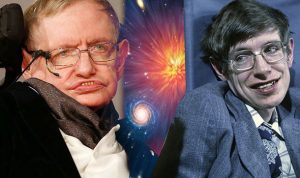
Stephen Hawking was challenged physically by Amyotrophic Lateral Sclerosis, or motor neurone disease. He caught pneumonia after that in 1985 and had tracheotomy operation which removed his ability to speak.
He communicated using a communications programme called Living Centre and spoke using a speech synthesizer and a small personal computer mounted on his wheelchair.
Stephen Hawking, Roger Penrose, David Wheeler and few other scientists have done a lot of work on black holes with all the mathematical calculations.
A black hole is a hypothetical body of intense pressure and infinite density existing in space which attracts and holds anything, including light, near its vicinity.
Its condition of intense pressure and infinite density is thought to be similar to what would have obtained in the very early Universe.
Penrose and Hawking in 1970, using Einstein’s General Theory of Relativity, proved mathematically that the Universe must have a beginning and will possibly, have an end.
Scientists say they are confident of what happened after what they call the Singularity following the Big Bang. However, they cannot conjecture what it would have been like before 10-43 seconds from the instant of the Big Bang (that is time equivalent to the part in a second after the Big Bang worth a decimal point and 43 zeros before the number 1). This is called the Planck Time.
If the Universe is expanding, even up till now, that means that at any previous time it would have been smaller in size and therefore denser. The small size, billions of years ago, can be traced back to Lemaitre’s primaeval atom.
Cosmologists generally, believe that the Universe would have started from a point of intense pressure and heat and exploded in a Big Bang which had a temperature of up to a thousand billion oC (degrees Celsius) or 1,800 billion oF (degrees Fahrenheit) from the point of the Singularity.
This is possible, they say, because the density in this condition is equivalent to the density in the nucleus of an atom today. In this temperature, energy form called photons can turn to subatomic particles (like electrons and protons) which can in turn change again into photons. Such conditions take place in particle accelerators today.
As the very hot Universe cooled, photons and particles lost energy and as the Universe continued to expand, were no longer interchangeable. In 14 seconds, the Universe cooled to three billion oC (5.5 billion oF) and nuclear fusion as in a Hydrogen bomb took place.
At three minutes, the Universe was 70 times hotter than the centre of the Sun today.
By the fourth minute a series of nuclear reactions took place and the nuclei of the element, Helium, were formed in a process scientists call Nucleosynthesis.

Nuclei could not hold on to electrons to form atoms at this condition.
By 30 minutes, the temperature was 300 million oC. At this condition, electrons developed and interacted with the nuclei to form plasma as in the centre of the Sun today.
By 300,000 years the Universe, still expanding, cooled to the temperature at the surface of the Sun today: 6,000 oC (10,800 oF).
Atoms started to form at this condition. Between then and half a million years, stable atoms of Hydrogen and Helium had developed.
Since stable atoms are electrically neutral, they stopped interacting with photons, so light broke out, so to say, and the Universe became transparent.

Before then, “darkness was upon the face of the deep.” Scientists trying to unify the account of creation as in the Bible with the Big Bang theory, believe that this was the point that God said “Let there be light;” and there was light.
This was marked by the decoupling of matter and energy. It is this energy in form of radiation that scientists call the background cosmic microwave radiation of the Big Bang which, they say, still exists today.
It is about -273 oC now and is what is said to be big evidence that there was the Big Bang.
By one million years, stars and galaxies started forming after matter and radiation had decoupled. This was because the Universe continued to expand and in dense regions, the expansion would have slowed and the region would have re-collapsed on its gravity since gravity always attracts.

Gravity outside pulled this body and it started rotating and the rotation when fast enough will balance the gravity outside to yield the galaxies.
It is like the cyclist in a velodrome. At great speed, he can ride up to the top of the velodrome without being pulled down by gravity. A rotating body can withstand gravity when its speed balances the gravity pulling it.

Huge amounts of Hydrogen atoms gathered under their own gravity; the temperature increased under pressure and nuclear fusion started. The heat caused expansion or stopped further contraction: Stars were born.
Large stars need more heat to stop the gravitational attraction inside them and thereby will be burning more nuclear fuel which finishes earlier.
With the intense heat in large stars, Hydrogen atoms fuse to yield elements heavier than Helium, like Carbon or even Iron.
As its nuclear fuel burns out, the star may collapse into what scientists believe is a black hole or, the outer region may be blown out as a Supernova which shines out brightly.
The heavier elements formed by the stars, like Carbon and Oxygen with Hydrogen, may gather and form another generation of stars like our Sun which is believed not to be a first generation star.
Some of the heavy elements formed this way came together to form the planets.
The Earth would have been too hot to yield life in the first two billion years.
After three billion years, the process of evolution started.
Primitive forms of life may have consumed the rubbish around by then to yield oxygen to give the more conducive atmosphere that we have today.

The Theory of Evolution on how life came to be on Earth is based largely on the work of Charles Darwin in his book Origin of Species written in 1859.
The theory states more or less: life started as a naked speck of protoplasm (sap in cells) floating in water; from there to seaweeds and aquatic animals and then amphibians – some turning into land creatures evolving into reptiles and birds, while others evolved into mammals like apes and man.
It is not impossible for life to have started in water before moving on to land. Toads, they say, tend to live out this evolution theory by starting as eggs, then tadpoles living like fish in water, and metamorphose into animals that can live on land.
That initial speck of protoplasm could have come from outer space.
Studies of meteorites and asteroids reveal that they contain the five nucleotides that make up DNA and RNA.
DNA is comprised of nucleotides with four types of bases denoted by letters A, C, G and T (Adenine, Cytosine, Guanine and Thymine).
In RNA, Uracil replaces Thymine.
Genes are made up of De-oxyribonucleic acid, DNA.
Scientists cannot say what happened before the Big Bang and up to the point of the Singularity. They cannot also say how the initial structure or particle came about and exploded in the Big Bang.
The Principle of Uncertainty by Werner Heisenberg however, explains how a particle can appear in a vacuum, which is supposed to be empty (as has been observed) and disappears almost immediately.
It is like borrowing and paying back almost immediately.
The initial particle may have emerged this way and annihilated as the Big Bang.
From the theory of the Big Bang the Universe came to be, not instantaneously but, by a gradual process.
Trying to unify the account of the Big Bang with the biblical account of the beginning is difficult. Be that as it may, the Church in 1951 under Pope Pius XII, officially pronounced the Big Bang theory in accordance with the Bible.
Pope Francis also said that the scientific account of the beginning of the Universe confirms God’s existence and is compatible with God’s plan: “The Big Bang, that today is considered to be the origin of the world, does not contradict the creative intervention of God; on the contrary, it requires it.”
He spoke at a meeting of the Vatican’s Pontifical Academy for Sciences on 27 October, 2014.
However, what scientists say that followed the Big Bang theory and took thousands, millions and billions of years to evolve took just six days to be created, and instantaneously, from the biblical account.
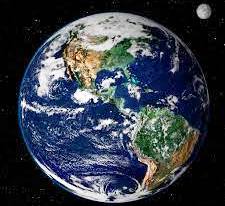
That is one of the main differences between the two accounts. Perhaps, as said in the Bible, one thousand years can be one day in the eyes of God (2 Peter 3:8).
One would have ordinarily thought that with the advances in science and technology, the biblical account of creation will be seen as old-fashioned. So far, not all of it can be proved and our limited knowledge forces us to still accept every other thing that we accept by faith.
The British Broadcasting Corporation, BBC, in late 2005 conducted a Gallup poll with some 2,000 people. Thirty-nine per cent of the respondents in U.K. accepted the biblical account of creation, while 48% believe that man evolved as in the theory of evolution.
In the U.S. however, 53% believed in the biblical account of creation.

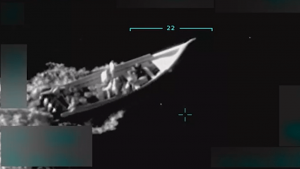
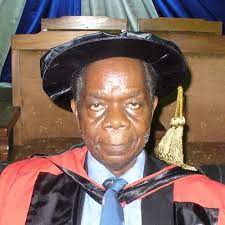

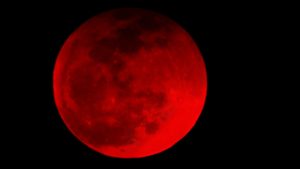






A very interesting read Obiechina. It’s great to have a God fearing scientists perspective.
I love God’s word and live my life based on faith in God‘s word.
Many thoughts come to my mind reading this article.
So many mysteries of God, but if we are truly interested enough he reveals the ones by His Spirit that are most important to us for our salvation. Oh the awesomeness of God.
One of my favorite verses my father often quoted when preaching
“And without controversy great is the mystery of godliness: God was manifest in the flesh, justified in the Spirit, seen of angels, preached unto the Gentiles, believed on in the world, received up into glory.”
1 Timothy 3:16
He has passed on but I can hear his voice saying, who was manifest in the flesh? Who was justified in the spirit? Who was seen of angels? Who was preached unto the Gentiles? Who was believed on in the world and received up in the glory? Jesus!
These verses also come to my mind..
“Heaven and earth shall pass away, but my words shall not pass away. But of that day and hour knoweth no man, no, not the angels of heaven, but my Father only.”
Matthew 24:35-36
Then Revelation tells us
“And I saw a new heaven and a new earth: for the first heaven and the first earth were passed away; and there was no more sea.”
Revelation 21:1
Just some verse verification that came to my mind after reading your article.
Thank you for sharing.